Anthracnose on pepper plants can cause plant death and reduced yield. Understanding the causes, signs and treatments helps farmers protect their gardens and increase profits.
Anthracnose on Pepper Tree
Anthracnose disease in pepper plants not only reduces yield and fruit quality but can also lead to plant death if not detected and treated in time. Understanding the causes, identifying symptoms, and implementing prevention and treatment methods will help farmers better protect their pepper plantations, increase productivity, and improve profits. Let’s explore with Sataka how to manage and prevent anthracnose effectively in the guide below.
1. How to Identify Anthracnose Disease in Pepper Plants
Anthracnose disease typically affects leaves, fruits, and branches of pepper plants. If not controlled promptly, it can spread widely and cause significant damage.
The initial symptoms are round brown spots, often appearing on the edges or middle of leaves. These spots can enlarge, causing leaves to dry out, turn yellow, and fall prematurely. The disease also causes black rot spots on fruits, which begin as small patches and later expand, causing the fruits to dry out and turn black. Infected fruits often fail to develop fully and drop before ripening.
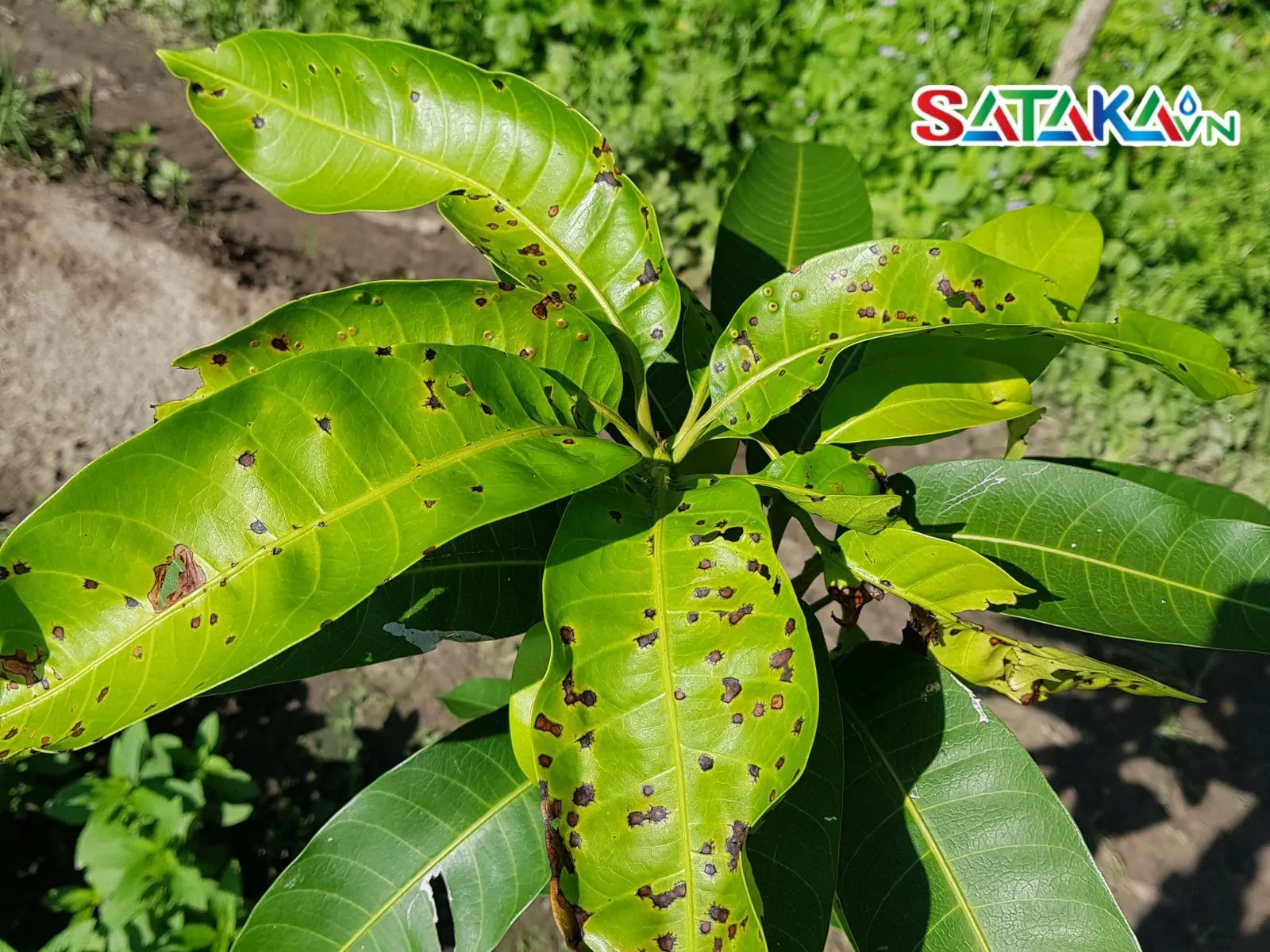
Signs of anthracnose disease on pepper plants
Anthracnose fungus can also attack pepper branches and stems, causing branch cracking and drying, which weakens the plant and reduces yield. Early detection of anthracnose symptoms allows timely implementation of control measures, preventing the disease from spreading throughout the plantation.
2. Major Causes of Anthracnose Disease in Pepper Plants
The fungus Colletotrichum sp. is the primary cause of anthracnose. It thrives in humid environments, particularly during the rainy season when air humidity is high. The following factors can contribute to disease development:
- High humidity and temperature: Warm and humid conditions are ideal for fungal growth. Regions with heavy rainfall, especially during the fruiting stage, are more prone to anthracnose outbreaks.
- Poor pruning and dense planting: Poorly pruned or overly dense plantations hinder air circulation, creating a damp environment favorable for fungal growth.
- Disease transmission: Anthracnose can spread through rainwater, wind, or infected plant debris. Failure to remove infected residues after harvest increases the risk of disease in subsequent crops.
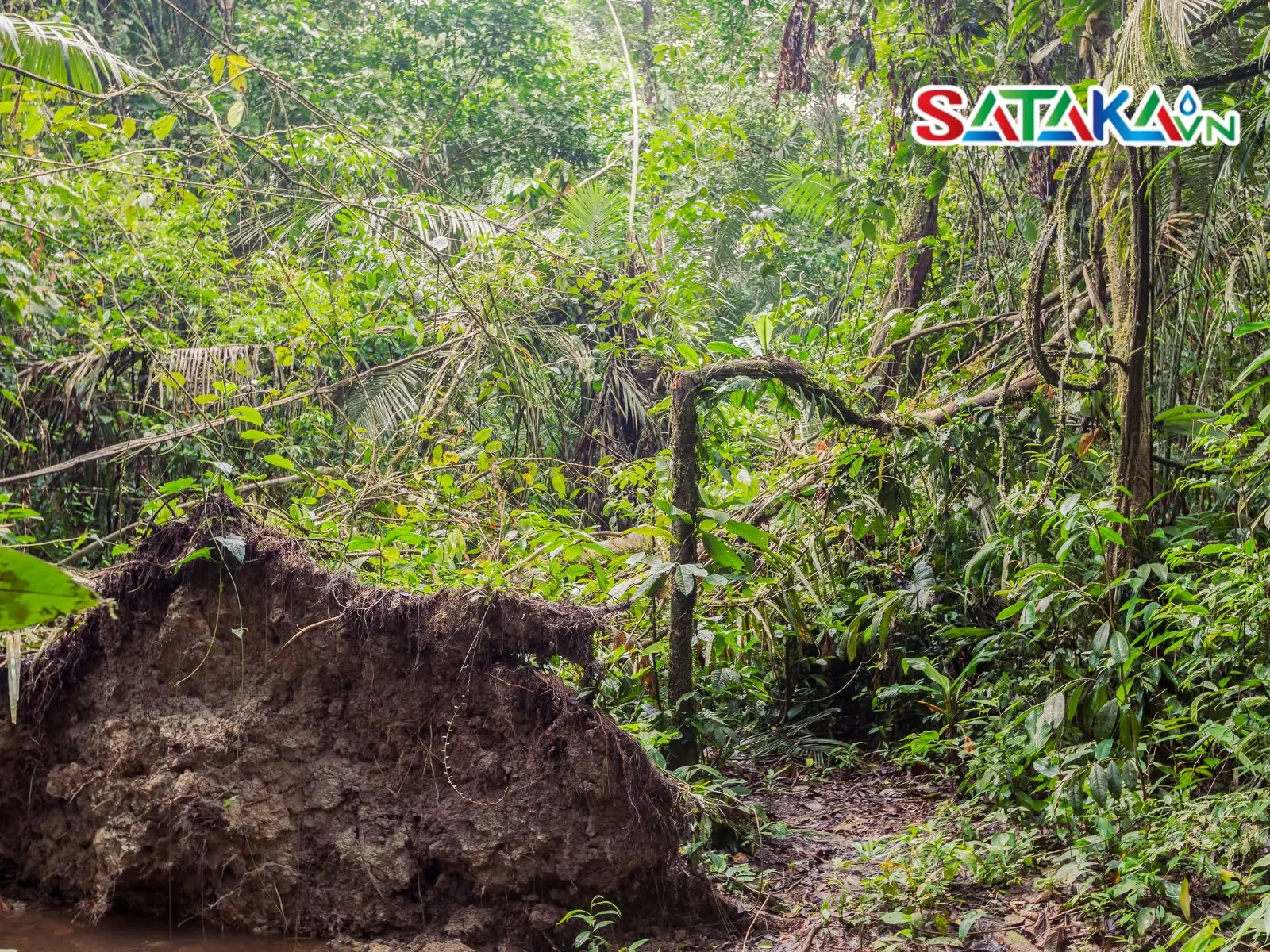
Humid environment
3. Preventive Measures Against Anthracnose in Pepper Plants
Prevention is the best approach to protect pepper plantations. Farmers can adopt the following measures:
- Disease-resistant varieties: Choose pepper varieties with high resistance to anthracnose to reduce infection risks.
- Proper spacing: Plant at appropriate distances to ensure good air circulation.
- Regular pruning: Regularly prune branches and leaves to improve ventilation and prevent fungal growth.
- Effective drainage: Maintain proper drainage to prevent waterlogging after rains and adjust watering to avoid over-saturation.
- Balanced fertilization: Provide sufficient nutrients, especially balanced fertilization, to promote healthy plant growth and improve disease resistance.
- Remove plant debris: Properly dispose of plant debris after harvest to limit sources of infection for future crops.
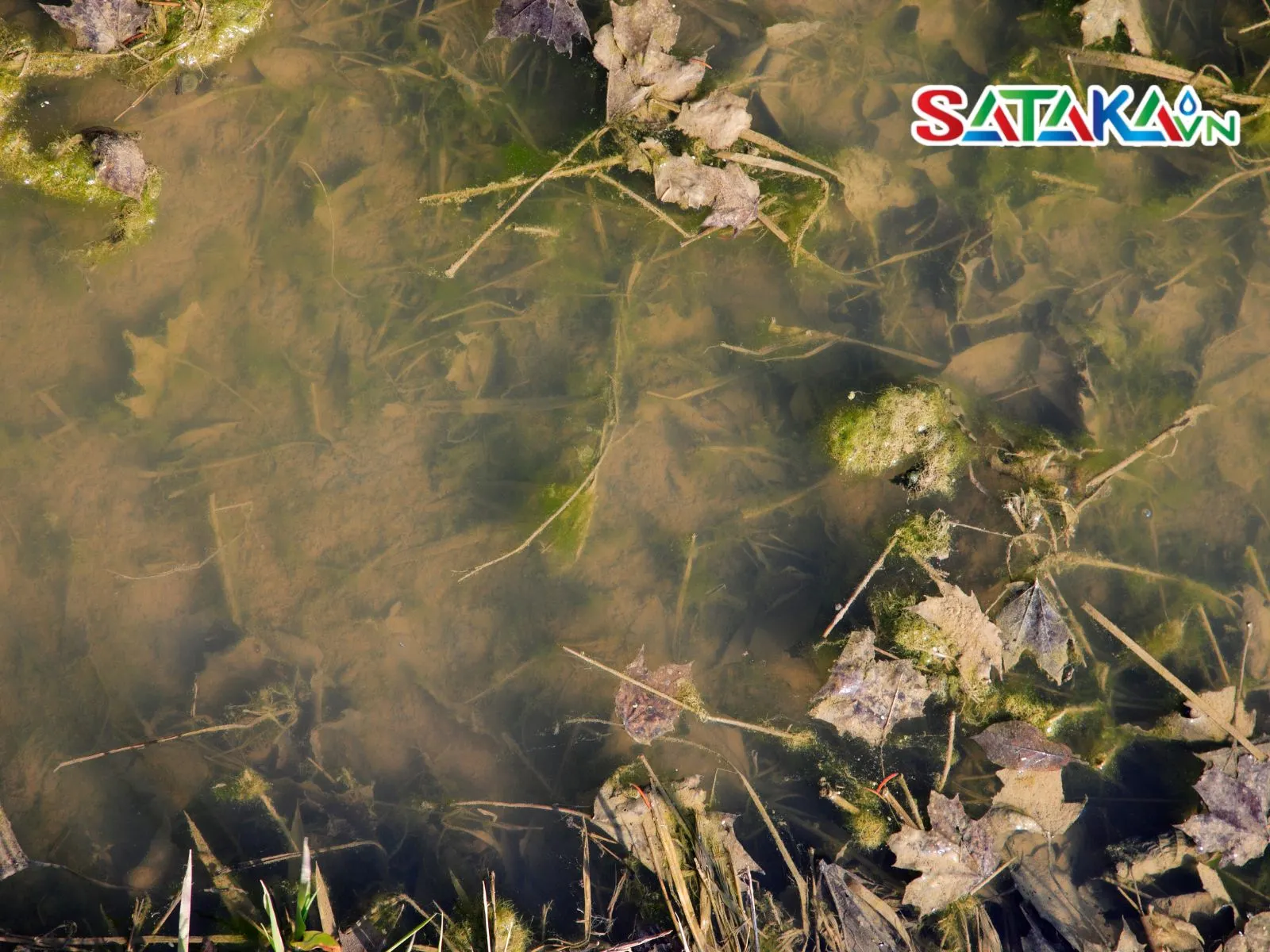
Standing water after rain
4. How to Treat Anthracnose in Pepper Plants
If anthracnose is detected in a pepper plantation, immediate treatment is essential to stop the disease from spreading and causing further damage:
- Use of fungicides: Many fungicides are available on the market to treat anthracnose in pepper plants. Farmers should use products recommended by agricultural authorities and follow instructions for proper dosage and application. Common active ingredients include Difenoconazole, Azoxystrobin, and Propiconazole.
- Biological control: Use antagonistic fungi or biological preparations to safely manage the disease-causing fungus.
- Remove infected parts: Prune infected plant parts and disinfect tools after pruning to prevent the spread of the disease.
- Regular monitoring: Conduct regular inspections of the plantation to detect and address disease signs early.
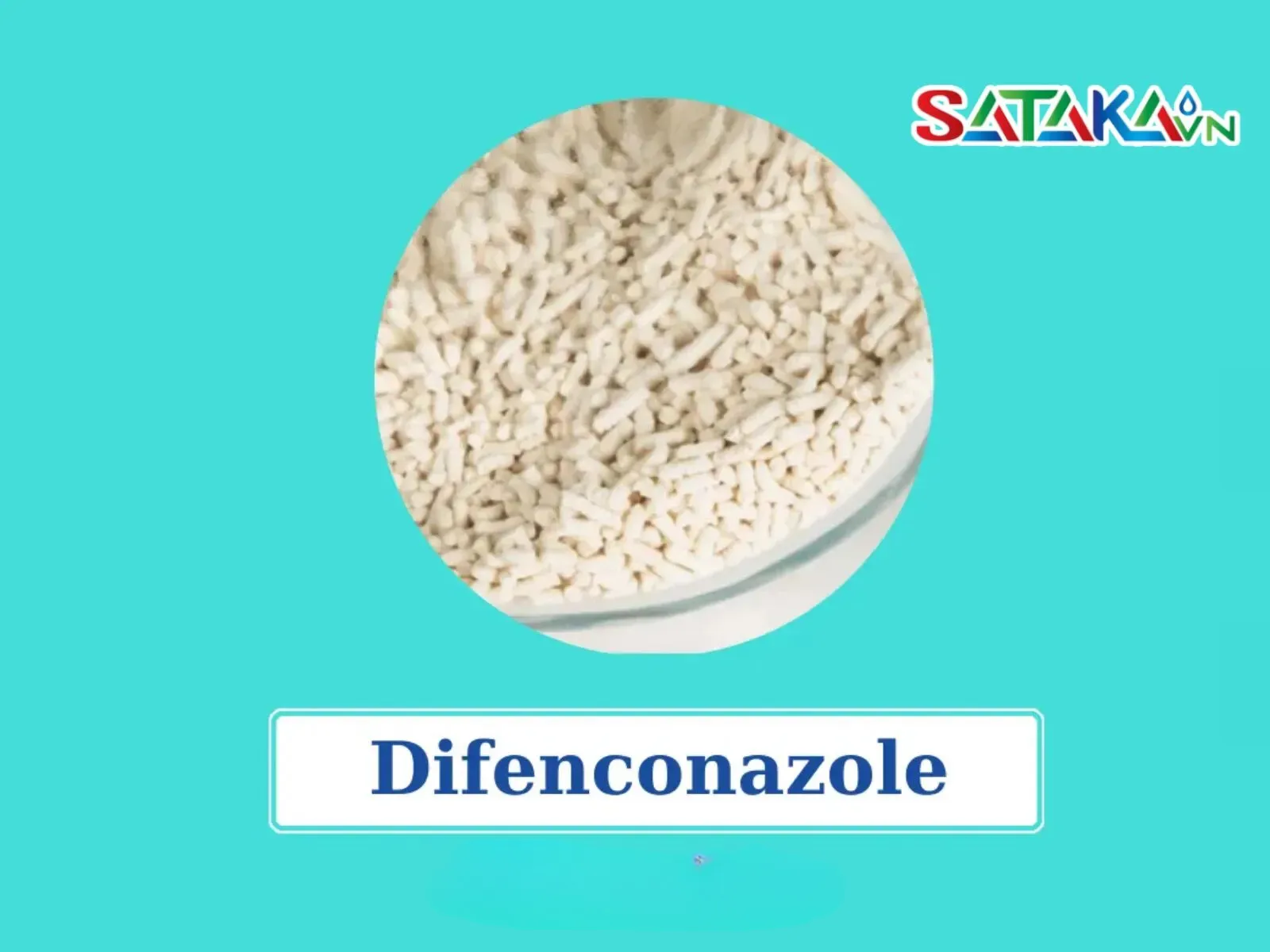
Active ingredient Difenoconazole in granule form
5. Common Mistakes in Preventing and Treating Anthracnose
Farmers may encounter the following mistakes during prevention and treatment, reducing effectiveness and increasing costs:
- Improper use of fungicides: Applying incorrect dosages, either too little or too much, can decrease effectiveness and increase expenses.
- Inconsistent care: Treating only part of the plantation or not implementing comprehensive measures allows the disease to recur and spread rapidly.
- Neglecting the environment and plant debris: Failure to manage environmental conditions and remove infected plant debris allows the fungus to re-establish and spread.
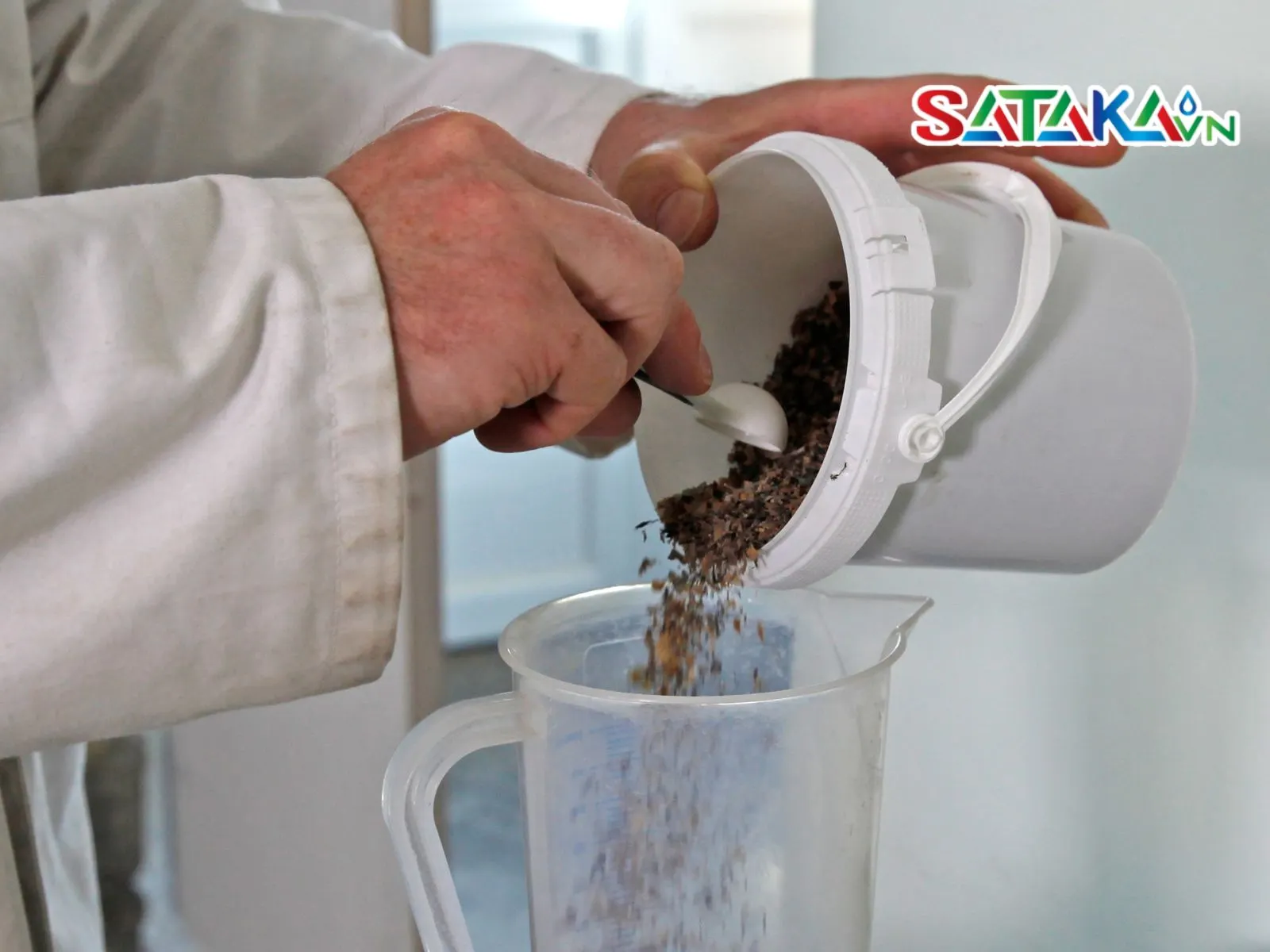
Incorrect dosage
Anthracnose disease in pepper plants is a significant challenge for farmers. However, combining proper prevention and timely treatment can help protect pepper plantations, maintain high yields, and ensure quality. Sataka hopes this guide provides farmers with useful information for managing anthracnose effectively.




